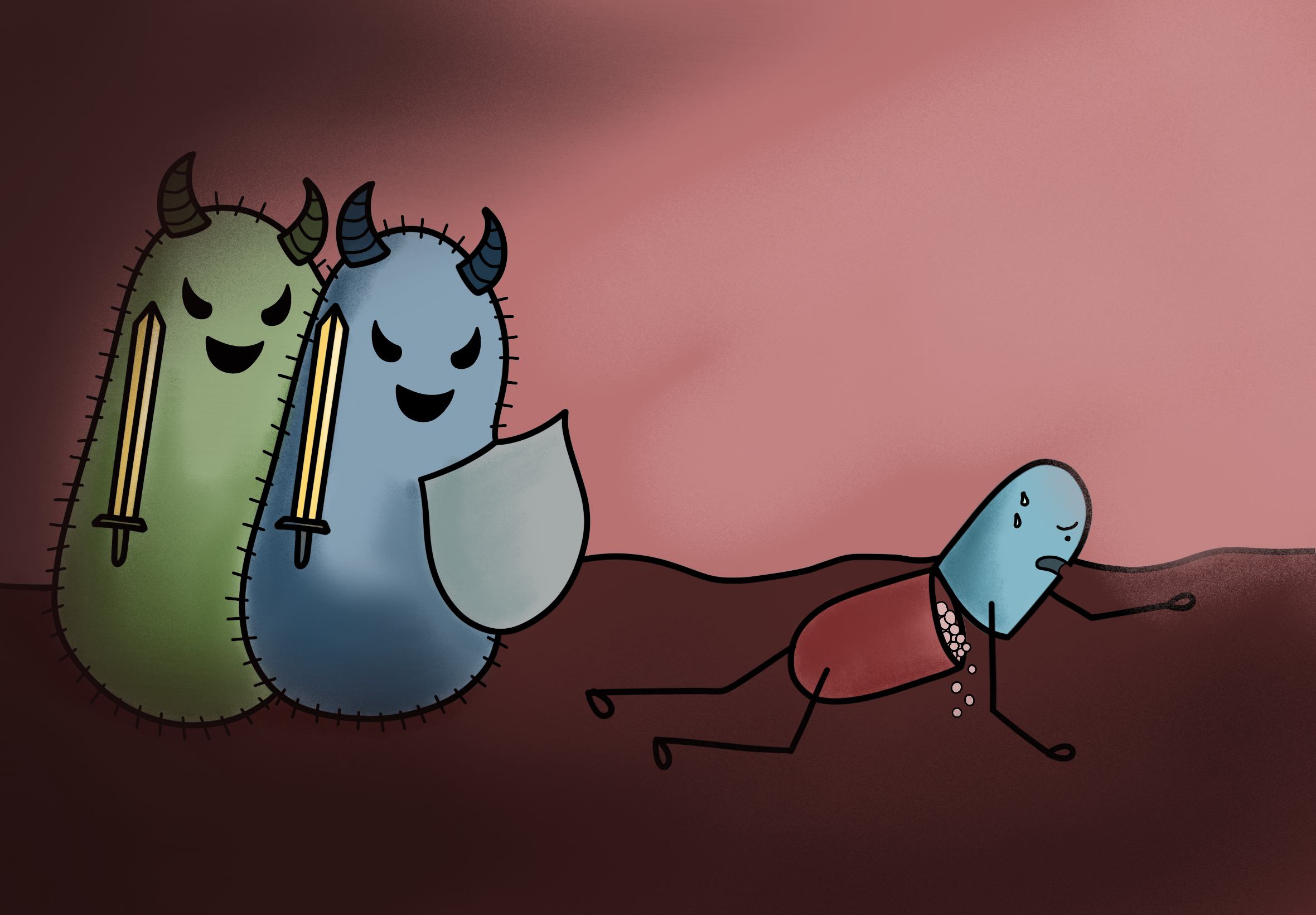

Andrew Hendry , Department of Biology
Tell us about your current research.
In essence, my research is trying to understand how ecology and evolution interact. So trying to understand how ecological differences in the environment shape the evolutionary trajectories of populations and shape evolutionary diversification, that’s the origins of biodiversity.
On the reciprocal side I investigate how, as things evolve, that evolution then feeds back to influence ecological properties.
We and others have now shown that things can evolve quite rapidly as you change environments. If those things evolve rapidly, you might expect that as they do so they will have effects on the environment.
When most people think of evolution, they tend to think of the effect of evolution on ecology. Can you give an example of the reverse – evolution having an effect back on ecological populations?
Part of my work is on Darwin’s finches in the Galapagos Islands. What we’re attempting to do there is figure out how adaptation to different food types drives the radiation of that group. There are 14 or so species that all evolved from a common ancestor in the last 2-3 million years. Those species evolved by the process of adaptation to different food types-different seed types and sizes and different plant matter. We try and examine how a variation in food resources and competition among the finches for them has led to the diversification of the finches. So that’s the ecology to evolution side-the plant community shaping the finches.
At the same time, we know the finch beaks will influence what they can feed on. The finch beak present in the environments-the number of species and the size of their beaks, and the number of individuals in each species-will presumably deplete different food resources to different extents. Large-beaked birds will differentially deplete large seeds from environment, and small-beaked birds will differentially deplete small seeds from the environment.
As finch beaks evolve, this would then feed back into shaping the plant community. The plant community shapes the beaks and the beaks shape the plant community. People are realizing that evolution can proceed rather rapidly, and if that’s so, we need to think about the consequences of that evolution and not just the causes.
What direction do you see your work taking in the coming years?
We have a fairly good understanding now of how environmental change drives evolutionary change. Really what we have for evolution influencing ecological change is a series of scattered examples. What I would hope is to build up a general framework for considering when and how these events occur, what drives them, and then having some nice experiments which test these various hypotheses for what’s going to be important or not. I would hope that’s where we’d be-to have a general framework and context for predicting these kinds of effects.
Karim Nader, Department of Psychology
What is some of the research you’ve been involved with?
One main theme in the lab is trying to understand the mechanisms that will change whenstore a memory. The old thinking was that once memory is stored, it could never be manipulated or changed and that it stayed there forever. What we found is that if you remind a rodent about a fixed memory, the memory becomes unfixed, or unstored, and needs to be restored. Now this has been found across many species and across tasks.
How might this be used to treat human afflictions?
There are a few clinical implications of this. A lot of psychopathologies have to do with certain circuits acting incorrectly. For example, if you are somebody with Obsessive-Compulsive Disorder (OCD), then the circuits in the brain that control that are just going to be rewired in such a way that it mediates obsessive compulsions. If you are somebody who is an addict, the brain mechanisms that control that kind of behavior are also going to be changed to maintain drug-taking behavior. If you’re somebody with post-traumatic stress disorder (PSTD), then the traumatic memory in your brain has been so strong and stored in such a robust way that the neurons and the mechanisms important for storing memories have been wired into the brain.
Looking into the mechanisms that mediate memory storage doesn’t just tell us about memories, but about the basics of how neurons change their wiring or connections together in terms of whether that neuron’s contribution is to a memory of trauma or to a memory of OCD or to a memory of drug addiction. What we’re trying to do now is take some of the basic work, and try to translate that to patients.
Now we’re working on patients to see if we can reduce cocaine cravings in human addicts by using that same restorage mechanism. We’re also trying to see if we can come up with a model in rats that will allow us to block circuits from reconsolidation and shift the rats away from compulsions in OCD.
What’s the connection between memory and an affliction like OCD? Are they stored in the brain the same way?
A neuron that is storing a traumatic memory uses the same mechanisms of storage as neurons that are, say, in the spinal cord controlling chronic pain. It’s the same mechanisms as in the circuit that control OCD or addiction. All changes in behavior are going to engage the same kind of mechanisms that undergo a storage mechanism initially, and a restorage mechanism when the circuit seems to be reactivated. The nice thing about reconsolidation is that it extends beyond post-traumatic stress disorder.
In one demonstration with my colleagues Alain Brunet and Scott Orr and Roger Pitman, we showed we could reverse the strength of traumatic memories in PTSD patients-and some of these individuals had trauma for about 30 years. We could reverse that down to below PTSD range with a single 15-minute intervention. No one expected that.
Xue Liu, School of Computer Science
For those who don’t have a background in computer science, how would you describe the research that you do?
My research is focusing on the study and design of scientific foundations and engineering frameworks for building modern cyber-physical systems-computer systems which feature tight integration and close coordination between computational, communication, and physical elements.
During the past several decades, we have seen tremendous growth of computation and communication technologies. They are now more pervasive in our everyday lives than ever before. We see them everywhere, from the automotive industry (autonomous driving, drive-by-wire), to civil infrastructure (smart buildings, smart bridges), to energy (smart grids), to healthcare (intelligent hospitals), to manufacturing (computer integrated manufacturing systems-CIMS), to entertainment (Wii, XBox), to mobile phones and consumer appliances. Many of our everyday activities depend heavily on these systems.
What is the Cyber-Physical System Lab?
At McGill, our Cyber-Physical System Lab (CPSL) studies state-of-the-art cyber-physical systems, including the science of designing and building such systems. For example, we have been carrying out research on sensor and actuator networks, industrial control systems, power management of Internet Data Centers, and real-time and embedded systems. Many of this research has practical applications, and we have teamed up with industries such as Bombardier, Bell Canada,
Microsoft, and IBM.
The award aims to promote research in new directions. What do you think the future of parallel computing will be?
With the support of this award, we target the development of innovative and enabling technologies in Green Information Technology. In a recent report released last year, Google reported that the energy used by its data centres is emitting 1.5 million tons of carbon annually. In fact, the IT industry is estimated to account for 2% of global CO2-emissions which is approximately as much as the aircraft industry, and is one of the fastest growing energy-consumption industries. In a world facing the pressing concern of climate change and the sustainability of its natural environments, we hope to create an environmental-friendly IT industry.
The overarching goal of our research is to develop more energy efficient IT infrastructures and technologies to significantly reduce the energy consumed everyday by a range of computing systems including embedded computers, servers and data centers. We will also study pairing Green IT with new technologies including smart grids, and renewable energies such as wind power.
–Interviews have been condensed and edited. Compiled by Anand Bery.








